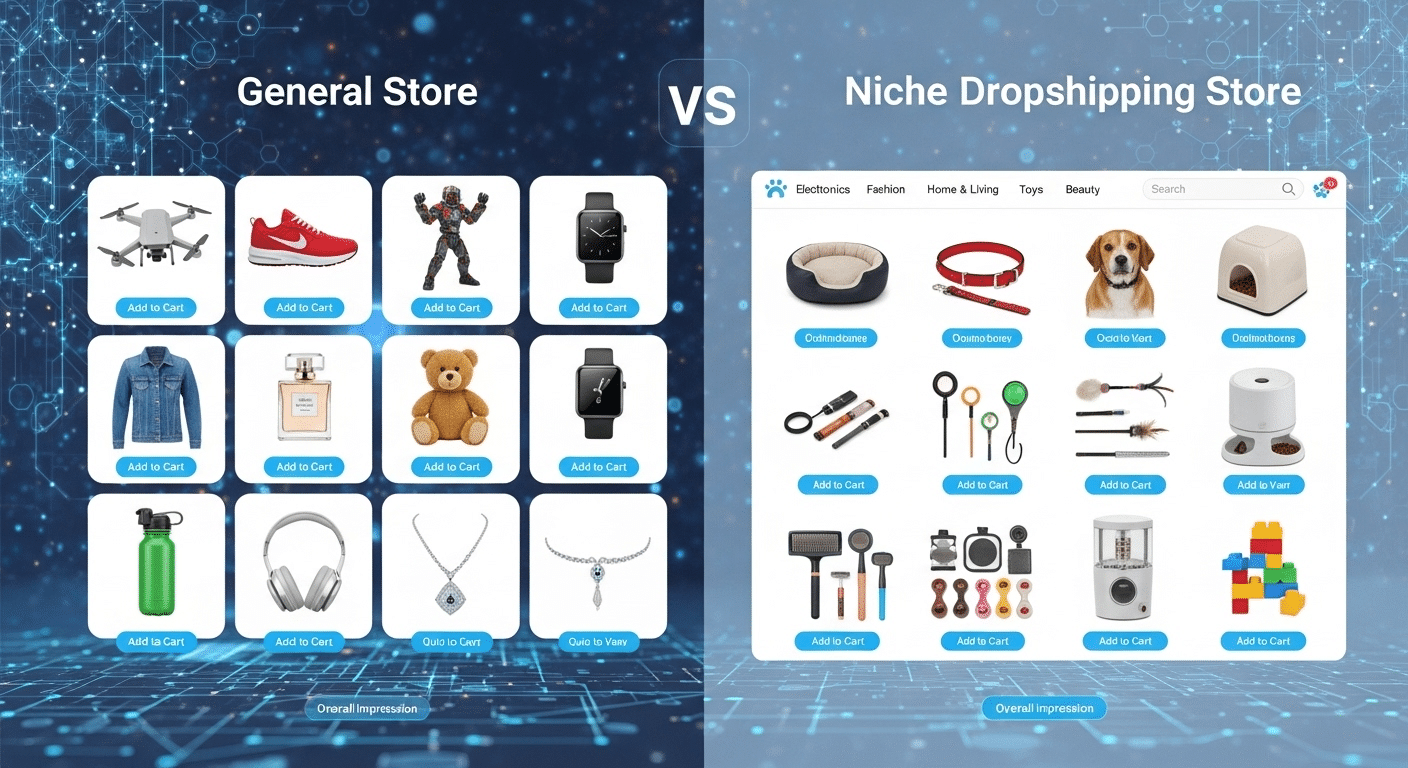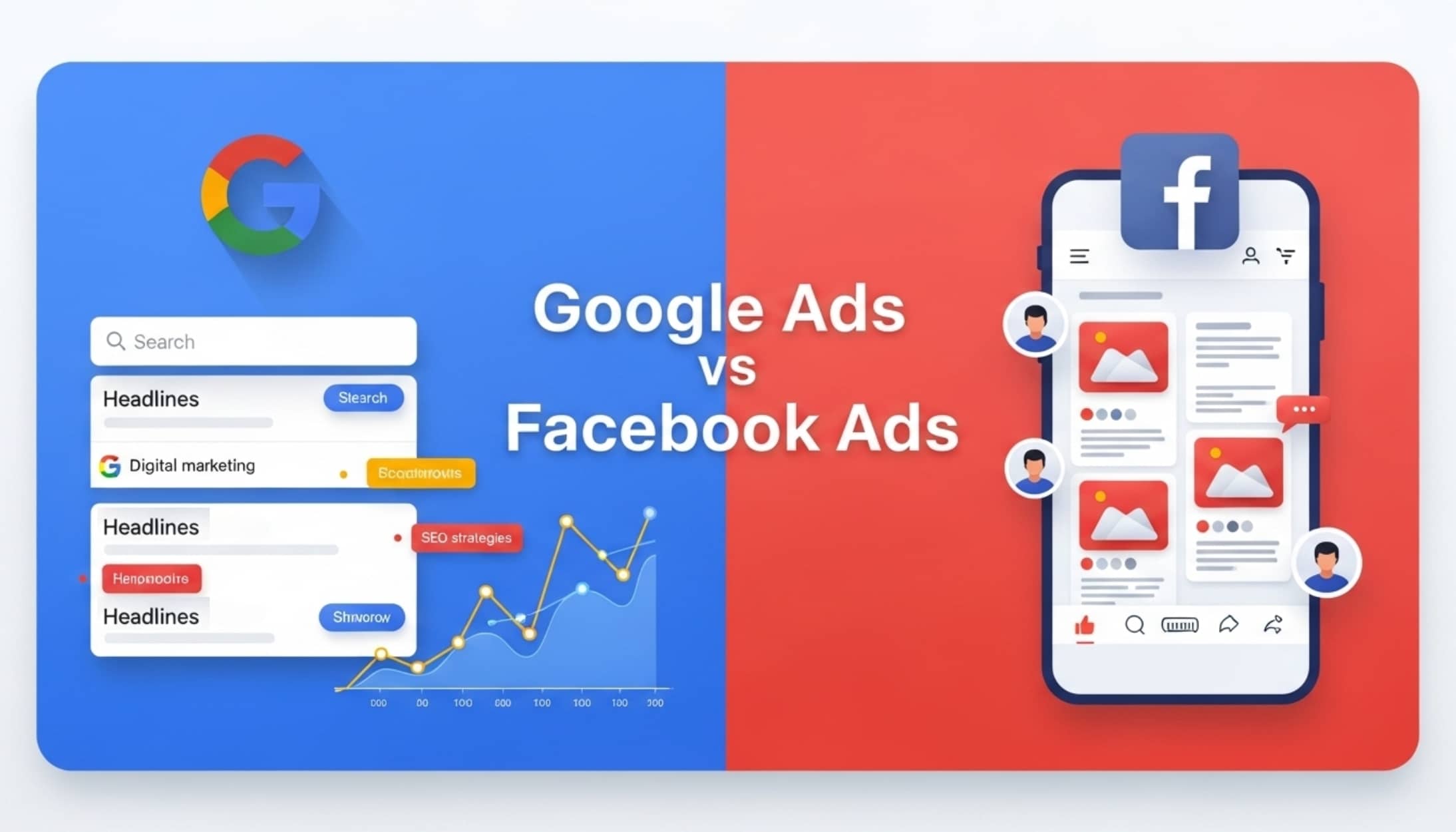Table Of Content
- What is market segmentation?
- Understanding the Core of Market Segmentation
- Advantages of Market Segmentation
- Fundamentals of Marketing Segmentation
- Different Forms of Market Segmentation
- Getting Started with Market Segmentation
- Developing a Market Segmentation Strategy
- Avoiding Common Pitfalls in Segmentation
- Real-World Examples of Market Segmentation
- Conclusion
What is Market Segmentation?
Market segmentation is a fundamental strategy in marketing that involves dividing a broad target market into smaller, more manageable groups of consumers who share similar characteristics, needs, or behaviors.
By segmenting the market, businesses can tailor their products, services, and marketing efforts to meet the specific demands of each group, ultimately enhancing their effectiveness and efficiency. This approach allows companies to focus on the most promising segments, maximize their marketing ROI, and build stronger connections with their customers.
In this blog, we’ll explore the essentials of market segmentation, including how to create effective segments, avoid common pitfalls, and leverage real-world examples to understand its practical applications.
Understanding the Core of Market Segmentation
Market segmentation is a strategic process that allows companies to divide their broad customer base into distinct groups, each with specific characteristics or needs. This process hinges on three main criteria:
- Common Needs (Homogeneity):Within a segment, the individuals or businesses should share similar needs or preferences. Grouping these like-minded customers allows for more targeted and effective marketing.
- Unique Characteristics (Distinction): Each segment should be distinct from the others, with unique traits that set it apart. This distinction ensures that marketing efforts can be precisely tailored to the specific segment, rather than being a one-size-fits-all approach.
- Similar Responses (Reaction): The members of a segment should respond in a similar way to marketing strategies. This consistency in behavior allows companies to predict how a segment will react to their campaigns and adjust their efforts accordingly.
For instance, an athletic footwear company might identify separate segments for basketball players and long-distance runners. These two groups have different needs and priorities, which means they will respond differently to various marketing messages. By recognizing these differences, the company can craft tailored campaigns that resonate with each group.
At its core, market segmentation is an extension of market research. It goes beyond simply understanding your market; it’s about identifying the specific groups within that market and tailoring your products and branding to appeal directly to them. The main goal is to reduce risk by focusing on the products that are most likely to capture market share and finding the best way to deliver these products to the target audience.
This focused approach helps companies optimize their resources and maximize their return on investment (ROI) by concentrating on the strategies that yield the best results.
The Benefits of Market Segmentation
Market segmentation is the practice of breaking down a broad market into smaller, more specific groups of consumers who share similar characteristics. This approach offers numerous advantages:
- More Focused Marketing- By identifying the unique needs and preferences of different segments, you can create marketing campaigns that speak directly to each group. This means your messages are more relevant and likely to resonate, leading to better engagement and higher conversion rates.
- Smarter Use of Resources- Market segmentation helps you concentrate your marketing efforts on the groups most likely to respond positively. By focusing on these high-potential segments, you can reduce waste and get more value from your marketing budget, ultimately boosting your return on investment (ROI).
- Improved Product Development- Knowing the specific needs of different segments allows you to develop products that better meet those needs. When your products align closely with what customers want, satisfaction and loyalty naturally increase, leading to stronger customer relationships.
- Stronger Competitive Edge- Companies that effectively segment their markets can stand out from the competition by offering products and services that are perfectly tailored to their target audiences. This not only makes your offerings more appealing but also positions your brand as a leader in meeting customer needs.
- Enhanced Customer Retention- By addressing the specific needs and preferences of different customer segments, you can build stronger, more personalized relationships with your customers. This increases their satisfaction and loyalty, leading to higher retention rates over time.
- Greater Market Understanding- Market segmentation provides deeper insights into the different groups that make up your overall market. By understanding these segments, you can better anticipate market trends and shifts, allowing you to stay ahead of the curve and adapt more quickly to changes in consumer behavior.
- Effective Communication- When you know the specific characteristics of your target segments, you can tailor your communication style, language, and channels to match their preferences. This leads to more effective and engaging communication, ensuring your message is heard and understood by the right audience.
- Increased Market Share- By targeting underserved or niche segments with tailored products and marketing strategies, you can tap into new opportunities and capture a larger share of the market. This approach allows you to expand your reach and grow your business in areas where competitors may not be focusing.
- Better Decision Making- With clear, defined market segments, decision-making becomes more data-driven and strategic. You can prioritize initiatives, allocate resources more effectively, and make informed choices that align with the specific needs of each segment, leading to better overall outcomes.
Fundamentals of Marketing Segmentation
Market segmentation is essential for tailoring your marketing strategies to meet the specific needs of different groups within a broader audience. By dividing the market into distinct segments, businesses can better understand their customers and deliver more personalized and effective marketing messages. Here’s a closer look at the four primary types of market segmentation, along with detailed examples:
Demographic Segmentation
Demographic segmentation involves dividing the market based on quantifiable characteristics such as age, gender, income, education, occupation, marital status, and family size. This type of segmentation is widely used because demographic data is relatively easy to collect and analyze, and it often serves as a reliable predictor of consumer behavior.
Example: Consider a luxury skincare brand. They might target affluent women aged 35-50 who have a high disposable income and are concerned about aging. The brand could offer premium anti-aging products tailored to this demographic, with marketing campaigns emphasizing luxury, quality, and scientific advancements in skincare. Meanwhile, a budget-friendly skincare line might target younger women, aged 18-24, focusing on affordability and solutions for common issues like acne.
Psychographic Segmentation
Psychographic segmentation goes beyond the basics of demographics to explore the psychological aspects of consumer behavior. It involves categorizing people based on their lifestyles, values, interests, attitudes, and personality traits. This approach helps businesses understand the underlying motivations that drive consumer decisions, making it possible to create marketing campaigns that resonate on a deeper emotional level.
Example: A company that sells outdoor adventure gear might segment their market based on lifestyle and values, targeting individuals who are passionate about outdoor activities and environmental sustainability. Their marketing could focus on products made from eco-friendly materials, appealing to consumers who prioritize sustainability in their purchasing decisions. They might also highlight the adventurous, freedom-seeking lifestyle that aligns with their brand, using imagery and messaging that speaks to the thrill of exploring the great outdoors.
Behavioral Segmentation
Behavioral segmentation focuses on how consumers interact with a product or service, including their purchasing habits, usage rates, brand loyalty, and readiness to purchase. By analyzing these behaviors, businesses can tailor their offerings and communications to better meet the specific needs of different consumer groups, driving engagement and loyalty.
Example: An e-commerce platform might segment its customers based on their purchasing behavior. For instance, they could identify a segment of frequent buyers who make purchases every month. To retain this high-value group, the platform might offer a loyalty program with exclusive discounts and early access to new products. On the other hand, they might also have a segment of occasional buyers who only shop during sales. For this group, targeted marketing campaigns could focus on promoting upcoming sales events and limited-time offers to encourage more frequent purchases.
Geographic Segmentation
Geographic segmentation divides the market based on location, such as country, region, city, or neighborhood. This approach recognizes that consumer preferences can vary significantly depending on where they live, due to cultural differences, climate, population density, and local customs. Geographic segmentation allows businesses to adapt their products, services, and marketing messages to fit the specific needs of different regions.
Example: A clothing retailer might use geographic segmentation to offer different product lines in different regions. For example, they might sell heavy winter coats and thermal wear in colder climates, while offering lighter, breathable clothing in warmer regions. The retailer could also tailor their advertising campaigns to reflect local culture and traditions, such as promoting festive collections during local holidays or events. In international markets, geographic segmentation might involve adapting the product offerings to suit regional tastes, such as introducing region-specific flavors in a global snack brand.
Different Forms of Market Segmentation
Market segmentation can be approached differently depending on the type of market you’re targeting. Here are the primary forms:
B2C (Business-to-Consumer) Segmentation
B2C segmentation is used when businesses are targeting individual consumers. It involves dividing a broad consumer market into smaller, more specific groups based on characteristics such as demographics (age, gender, income), psychographics (lifestyle, values), behavior (purchase habits, brand loyalty), and geography (location).
Why It’s Important- It allows companies to tailor their marketing strategies to specific consumer groups, making their campaigns more effective and personalized.
Example: A fitness apparel brand might use B2C segmentation to target health-conscious women aged 25-40 with active lifestyles, focusing on marketing messages that emphasize performance and style.
B2B (Business-to-Business) Segmentation
B2B segmentation is used when a business sells its products or services to other businesses. This type of segmentation focuses on dividing the market based on business-related factors such as industry, company size, revenue, geographic location, or the specific role of the buyer within the company.
Why It’s Important- It helps companies tailor their offerings and marketing efforts to the specific needs of different businesses, ensuring that their products and services meet the unique requirements of each segment.
Example: A cloud service provider might segment its market by company size, offering scalable solutions for small startups, mid-sized businesses, and large enterprises.
Hybrid Segmentation
Hybrid segmentation combines different types of segmentation to create more detailed and specific segments. For example, a company might use a combination of demographic and psychographic data to better understand and target its audience.
Why It’s Important- It provides a more comprehensive view of the market, allowing for even more precise targeting and customized marketing strategies.
Example: A luxury car manufacturer might use hybrid segmentation to target high-income individuals who value both status (demographic) and sustainability (psychographic), promoting an eco-friendly luxury vehicle.
Getting Started with Market Segmentation
Phase 1: Define Your Market
- Identify your general audience.
- Understand the broad group of people interested in your product or service.
- Establish this broad market as the foundation for segmentation.
Phase 2: Choose Segmentation Criteria
- Select relevant criteria for dividing your market (e.g., demographics, geography, behavior, psychographics).
- Ensure these criteria align with your business goals and product offerings.
- Focus on criteria that will help you understand and address the diverse needs within your market.
Phase 3: Gather Data
- Collect data through market research, surveys, and analytics.
- Use both internal data (customer purchase history, website analytics) and external sources (industry reports).
- Ensure the data gathered is comprehensive and relevant to the chosen segmentation criteria.
Phase 4: Analyze and Segment
- Analyze the collected data to identify patterns and similarities.
- Group customers into distinct segments based on shared characteristics.
- Make sure each segment is distinct, measurable, and actionable.
Phase 5: Test and Refine
- Implement targeted marketing campaigns for each segment.
- Monitor the performance of these campaigns using key metrics.
- Refine your segmentation strategy based on the results, making adjustments to improve effectiveness.
Developing a Market Segmentation Strategy
Creating a market segmentation strategy is crucial for effectively targeting and reaching your desired segments. Here’s a step-by-step approach to develop one:
Set Clear Objectives
Define what you aim to achieve with your segmentation strategy. Common objectives include increasing sales, enhancing customer retention, or successfully launching a new product.
Clear objectives will guide your strategy and ensure all efforts are aligned.Prioritize Segments
Evaluate and prioritize the segments based on their value to your business. Focus on segments that align best with your objectives and offer the highest potential for growth. Prioritization helps allocate resources efficiently to the most promising opportunities.
Tailor Your Messaging
Develop distinct messaging and value propositions for each segment. Ensure that your messaging addresses the specific needs, preferences, and pain points of each group. Tailored messaging increases relevance and engagement with your audience.
Choose the Right Channels
Identify the most effective communication channels for each segment. Consider whether your segments prefer email, social media, direct mail, or other channels. Using the right channels ensures your message reaches the intended audience in the most impactful way.
Measure and Optimize
Continuously monitor the performance of your segmentation strategy. Use data and analytics to understand what’s working and where there’s room for improvement. Regularly optimize your strategy to enhance effectiveness and achieve better results.
Real-World Examples of Market Segmentation
To see market segmentation in action, let’s explore a few real-world examples:
Coca-Cola: Coca-Cola uses demographic segmentation to target different age groups with specific products. For instance, Coca-Cola Zero is marketed to young adults who are health-conscious but still want the classic taste of Coke.
Nike: Nike uses psychographic segmentation to target athletes and fitness enthusiasts. Their marketing campaigns are designed to appeal to the values and lifestyle of this segment, emphasizing performance, innovation, and self-improvement.
Amazon: Amazon uses behavioral segmentation to tailor product recommendations to individual customers based on their browsing and purchase history. This personalized approach has been a key factor in their success.
Avoiding Common Pitfalls in Segmentation
Market segmentation is a powerful tool, but it comes with its own set of challenges. Here are some common pitfalls to avoid to ensure your segmentation strategy remains effective:
Over-Segmentation: Creating highly specific segments can lead to fragmented marketing efforts, spreading resources too thin and diluting brand messaging. Ensure segments are broad enough to be impactful while still targeted.
Ignoring Data: Segmentation should be based on accurate and up-to-date data, not assumptions, gut feelings, or stereotypes. This helps create effective segments that align with actual consumer behavior and preferences.
Lack of Flexibility: Market conditions and consumer behavior can change quickly. It’s essential to remain flexible and be ready to adjust segments as new data or market dynamics emerge. This adaptability keeps your strategy relevant over time.
Neglecting Smaller Segments: While focusing on high-value segments is important, smaller segments should not be ignored. They might offer significant growth opportunities in the long term. Balance your focus to maximize market reach and potential growth.
Conclusion
Market segmentation is not just a tool but a crucial strategy for any business looking to thrive in today’s competitive landscape. By understanding the unique characteristics and needs of different customer groups, companies can create more personalized and targeted marketing efforts that resonate with their audience.
Whether it’s through demographic, psychographic, behavioral, or geographic segmentation, the goal is to identify the most valuable segments and focus your resources where they will have the greatest impact. By avoiding common pitfalls and continuously refining your approach based on data and market changes, you can ensure that your segmentation strategy remains effective and drives sustained business growth.



 Free dropshipping courses
Free dropshipping courses




